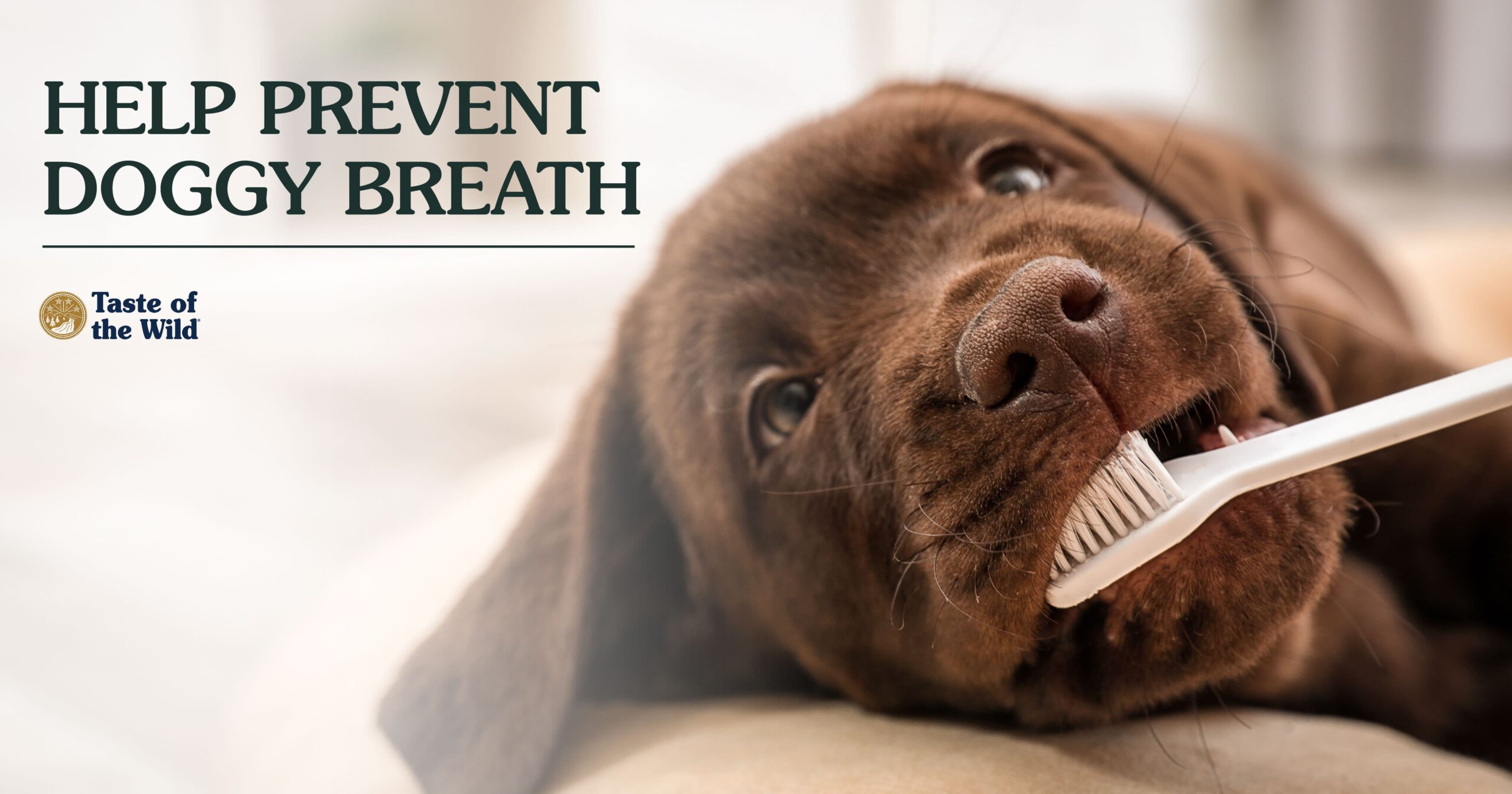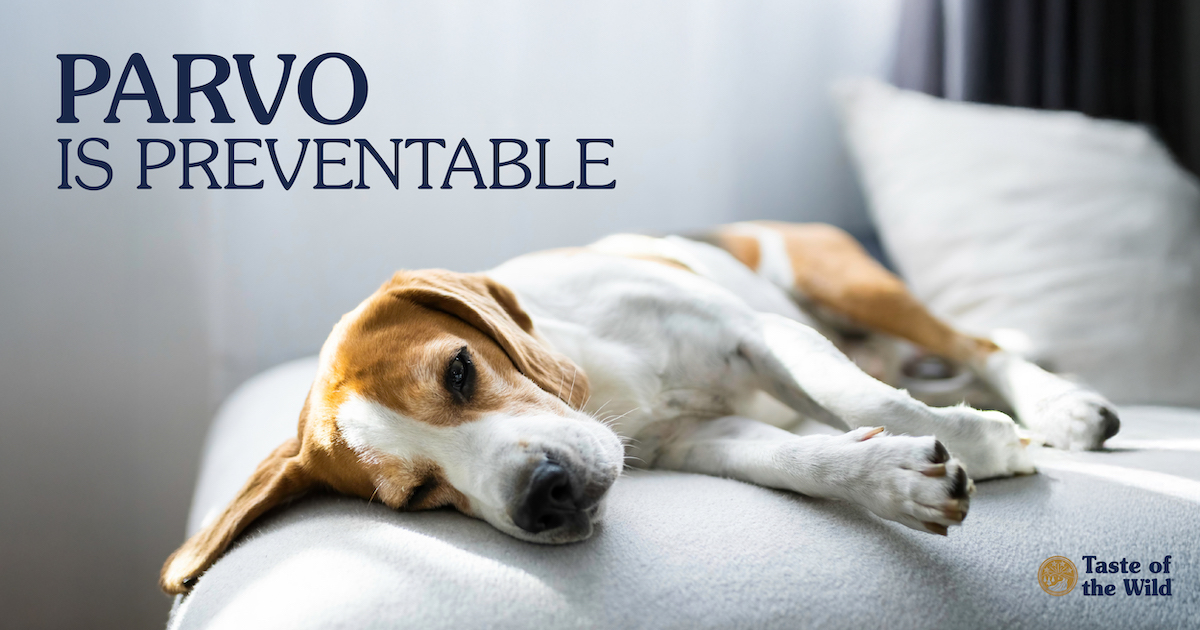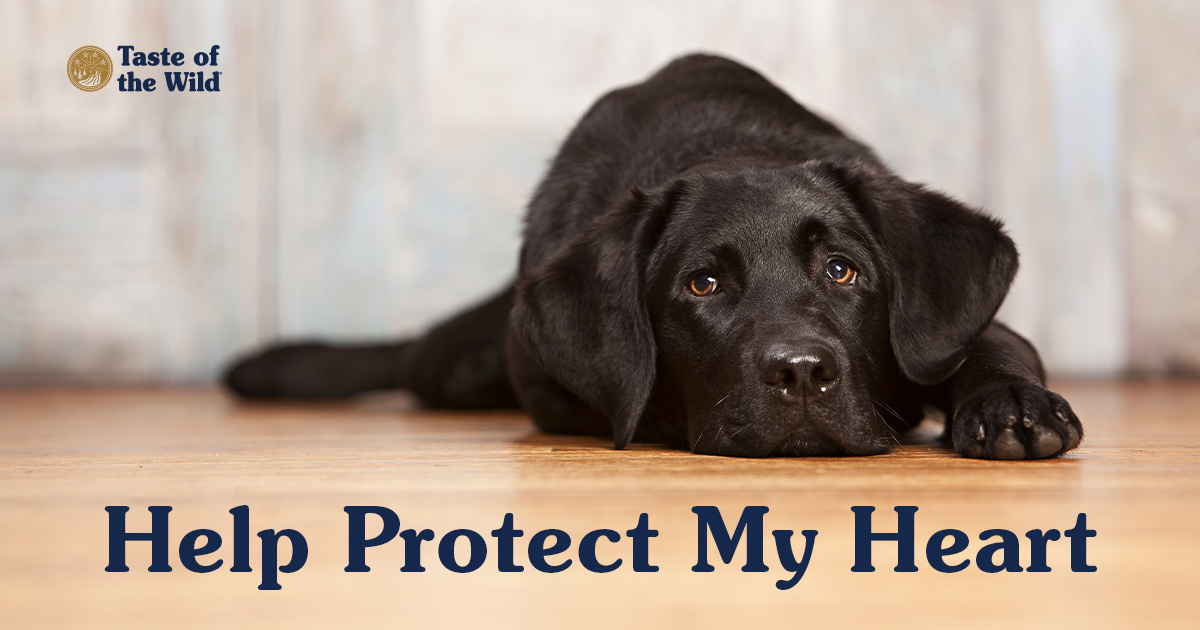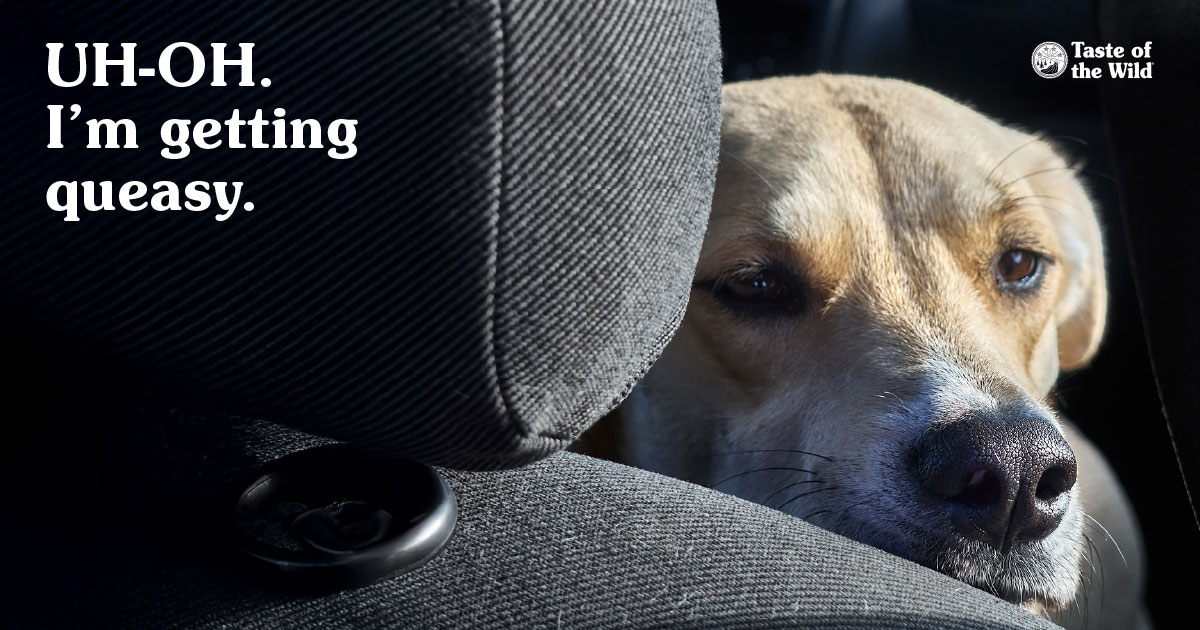At-Home Dental Care for Your Dog
Friday, February 17, 2023 | Health

Does this sound familiar? You’re sitting on the couch, your dog climbs up for some snuggles and “Uck, what is that smell?!” Doggy breath. Every dog parent has probably experienced it at some point. But the good news is that by performing at-home dental care, you can help prevent doggy breath and keep your dog’s teeth and gums healthier — which keeps your dog healthier. And it’s not as hard as it sounds — with some training and plenty of patience.
Gum Disease Can Go Unnoticed
Your dog’s teeth may look pretty clean, but there could be inflammation lurking beneath the surface. The buildup of plaque and tartar can allow bacteria to invade under the gum line, causing painful inflammation called periodontal or gum disease. According to the American Veterinary Medical Association, gum disease is the most common oral problem veterinarians seen in dogs, with most dogs having some degree of periodontal disease by the time they’re three years old.
The early stages of gum disease often go unnoticed, which is why it’s important to brush your dog’s teeth regularly, even if they look fairly clean. You don’t want gum disease to progress, as it can allow bacteria to enter the bloodstream and damage other organs.
Brush, Brush, Brush Those Teeth
The best way to fight plaque and gum disease is by brushing your dog’s teeth — preferably daily. You can use a finger brush, a pet toothbrush, a child’s toothbrush or gauze wrapped around your finger. Make sure you use dog-friendly toothpaste as human toothpaste can cause an upset tummy. Dogs will like the taste of the pet toothpaste better anyway, since it comes in flavors like poultry and peanut.
Start by letting your dog lick a small amount of their toothpaste from your finger. Then introduce their toothbrush by letting them lick the toothpaste from it. Gently rub the toothbrush under your dog’s chin and gradually work up to touching their lips and rubbing along their gums. Once they’re used to the brush, place the toothbrush in their mouth and focus on brushing the outside surfaces. Keep in mind that it may take a few months of training before you can brush your dog’s teeth successfully.
Chewing Things Can Be a Good Thing
Most dogs like to chew on all sorts of objects — including some things that we wish they wouldn’t. But the right object to chew on can be helpful in keeping your dog’s teeth clean and reducing tartar buildup. The Veterinary Oral Health Council (VOHC) has a list of VOHC-approved foods and chew treats, as well as toothbrushes, toothpastes, dental wipes and water additives that have been proven to help reduce plaque and tartar on dogs’ teeth.
Hard treats or toys (e.g., bones, antlers, hard nylon toys) are not recommended as they can break your dog’s teeth or possibly shatter and be swallowed, leading to gastrointestinal tract blockage or damage. Toys or treats that have some give in them are better choices for your dog to chew on and get those teeth cleaner. The American Animal Hospital Association has a graphic showing common products that may cause problems for your dog.
If Brushing Is a No, Try an Antiseptic Rinse
If you’ve tried and tried and your dog just doesn’t like having their teeth brushed, you could try an anti-plaque antiseptic rinse like chlorhexidine. Available as a gel or liquid, chlorhexidine is safe for pets with few negative side effects, although it may taste icky to your dog.
Professional Cleanings Are Important, Too
To help keep our teeth and gums healthy, it’s recommended that people brush their teeth twice a day and visit the dentist regularly for a professional cleaning. The same recommendation applies to dogs, too. Daily brushing can help remove plaque, but a professional cleaning performed by your veterinarian or a board-certified veterinary dentist is necessary to remove the tartar that’s above and below the gum line. Your veterinarian will likely perform these cleanings under anesthesia so they can conduct a thorough cleaning that’s also comfortable for your dog.
At-home dental care is probably not going to be high on your dog’s list of fun things to do — particularly when you first start out. But hopefully over time and with lots of praise and rewards they will become used to it and dental care can become just another (but important) part of your daily routine.
RELATED POST: Are Small Dogs More Prone to Dental Disease?
The information in this blog has been developed with our veterinarian and is designed to help educate pet parents. If you have questions or concerns about your pet’s health or nutrition, please talk with your veterinarian.




